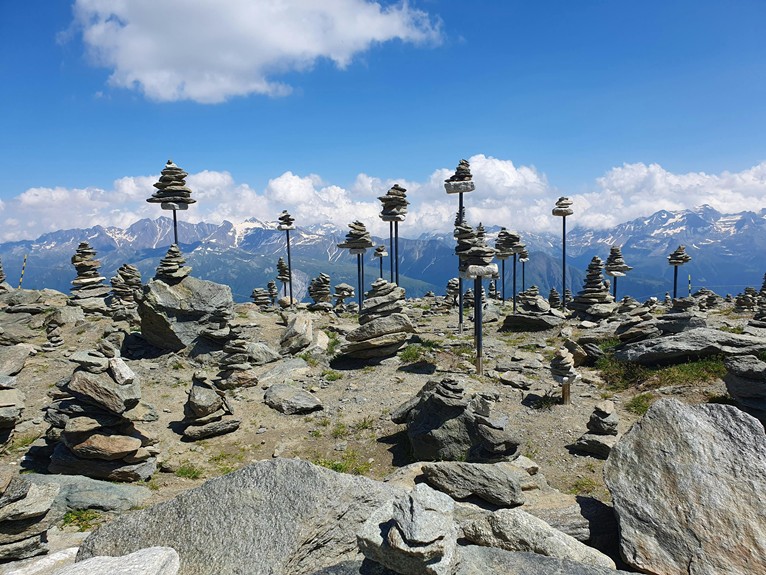Uluru Transformed by Spectacular Waterfalls
Following periods of heavy rainfall, Uluru, a massive sandstone monolith in Australia's Red Centre, is transformed into a breathtaking spectacle as cascading waterfalls become a rare yet striking addition to the site's arid landscape. This phenomenon highlights the significance of water conservation in the region, as waterholes like Kantju Gorge and Mutitjulu serve as essential resources for local wildlife. Heavy rainfall, such as the recent 36mm recorded at Yulara Airport, rejuvenates the ecosystem, supporting local wildlife and ecosystem health. To understand the full implications of this rare occurrence, further exploration of Uluru's unique geological formation and conservation efforts is warranted.
Highlights
- Rare waterfalls cascade down Uluru's sandstone face, highlighting water conservation significance in the region.
- Uluru's unique geological formation aids in water retention and flow, supporting local wildlife and ecosystem health.
- Heavy rainfall transforms Uluru's landscape, rejuvenating the ecosystem and supporting conservation efforts.
- Parks Australia enhances conservation efforts, focusing on habitat preservation to safeguard waterholes and prevent erosion.
- Visitor experiences are enriched by dramatic waterfalls, offering unique photographic opportunities and educational insights into Uluru's history.
Uluru's Rare Waterfalls
Occasionally, Uluru, a sacred site for Indigenous Australians, is transformed by a rare and breathtaking phenomenon – waterfalls cascading down its sandstone face.
This occurrence highlights the significance of water conservation in the region. Uluru's unique geological formation, composed of sandstone, contributes to its water retention and flow.
Recent rainfall in the area has emphasized the cultural significance of Uluru's waterholes, including Kantju Gorge and Mutitjulu Waterhole, which serve as essential resources for local wildlife.
According to Parks Australia, these waterholes play a critical role in maintaining the local ecosystem's health.
Consequently, the site's management continues to prioritize water conservation, ensuring the long-term sustainability of this sacred site.
This approach underscores the interconnectedness of Uluru's cultural and environmental significance.
Impact of Heavy Rainfall
The impact of heavy rainfall on Uluru is multifaceted, with a single significant event capable of transforming the site's landscape and rejuvenating its ecosystem.
Heavy rainfall, such as the recent 36mm recorded at Yulara Airport in two days, is a rare phenomenon in the arid desert climate surrounding Uluru. This unusual weather pattern contributes to the formation of temporary waterfalls, which not only enhance the site's aesthetic appeal but also play an essential role in maintaining ecosystem health.
The increased water flow supports local wildlife and underlines the importance of understanding rainfall patterns in the region. By studying these patterns, conservation efforts can be better informed, ultimately benefiting the delicate balance of Uluru's ecosystem.
This understanding is critical for effective management and conservation of the site.
Unique Geological Formations
Characterized by a distinctive red-brown hue, Uluru's sandstone composition has been shaped over millions of years through a combination of wind, water, and ice erosion.
This unique geological process has given rise to fascinating rock formations, attracting nature enthusiasts and scientists alike. The monolith's geological significance is evident in its layered structure, comprising alternating bands of sandstone, conglomerate, and shale.
According to Parks Australia, Uluru's rock formations hold valuable insights into the region's geological history. The unique combination of sandstone and erosion has resulted in a breathtaking landscape, with Uluru rising 348 meters above the surrounding plain.
This natural wonder is an indication of the region's rich geological heritage, offering a glimpse into the Earth's ancient past.
Conservation Efforts in Action
Parks Australia's conservation efforts are stepped up in response to the heavy rainfall at Uluru, underscoring the organization's commitment to protecting the site's delicate ecosystem.
Habitat preservation is a key focus, with measures in place to safeguard the waterholes and prevent erosion. Cultural education is also being emphasized, with educational programs highlighting the significance of the site and the importance of preserving the local environment.
Anangu elders work closely with Parks Australia to guarantee that conservation efforts align with traditional Indigenous practices. According to a Parks Australia spokesperson, "The recent rainfall is a welcome event, and we are working hard to guarantee that the site's ecosystem is protected for future generations."
Conservation efforts aim to strike a balance between preserving the site's natural beauty and respecting the cultural heritage of the land.
Visitor Experiences Enhanced
Uluru's dramatic waterfalls have greatly enhanced visitor experiences, drawing attention to the site's unique geological and cultural significance.
This temporary phenomenon presents unparalleled photographic opportunities, with visitors enthusiastic to capture the majestic beauty of the waterfalls.
Parks Australia offers guided tours that provide insight into the site's geological and cultural history, allowing visitors to appreciate the significance of the waterfalls within the broader context of Uluru's unique landscape.
According to Parks Australia, these tours also emphasize the importance of conservation and environmental management, fostering a deeper understanding of the site's delicate ecosystem.
Visitors can gain a more profound appreciation for Uluru's natural and cultural significance through these educational experiences.






